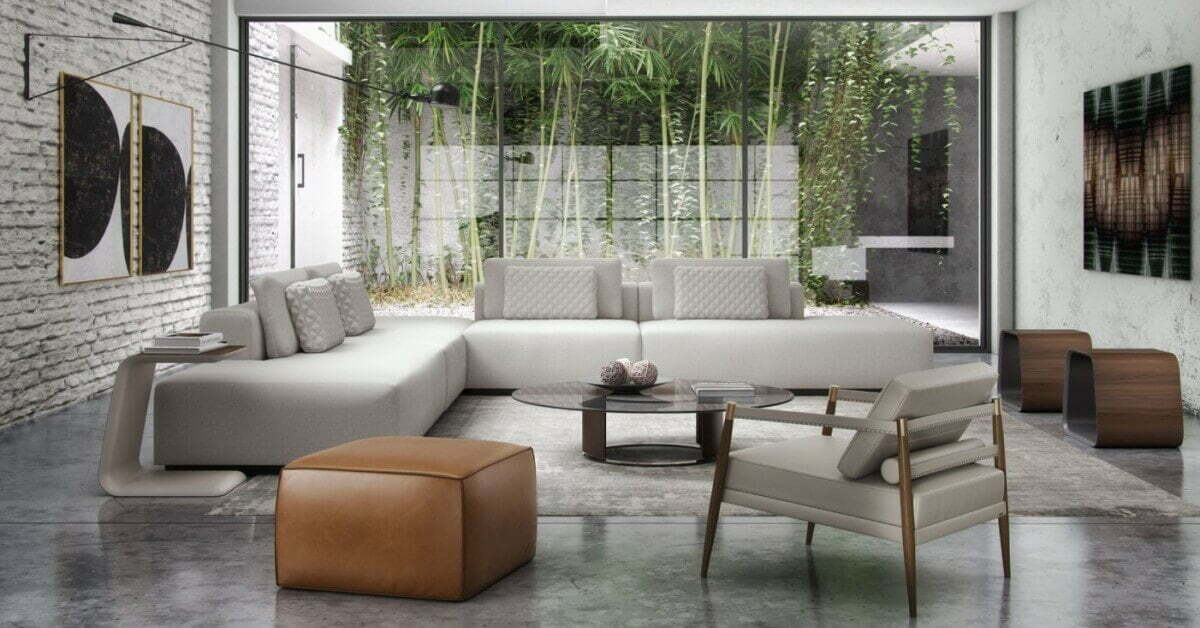Design Tips
4 Interior Design Tips From Our Design Experts
If you’re planning on decorating your home but aren’t completely sure how to do it right, you’ve come to the right place. Our design experts are here to share with you 4 interior design tips so you can create your dream interior for any space.
1) – Elements of Interior Design
First of all, it’s important to know the elements of interior design. Altogether, there are 7 elements. When designing a room or space, you need to consider all elements. The 7 elements of interior design are:
- Colour
- Form
- Light
- Line
- Pattern
- Texture
- Space
Colour- Colour not only affects the look of a room, but it also affects the feel or “mood” of the room. When choosing colours, think about what type of energy and mood you want the room to have. For example, red is usually seen as a “passionate” or “intense” hue, while blues and greens are usually perceived as “tranquil” or “soothing,” and yellow is often seen as “happy” and “optimistic.”
Form- Form means shape, referring to any 3D object in a room, including furniture and decor. There are 2 forms a room can take:
- Organic Form: natural and irregular, with curvy or abstract shapes
- Geometric Form: sharp, man-made lines and edges, like squares or triangles
Light- Light is very simple, you want quality lighting in each room. Lighting can come in different forms like man-made, natural, or a combination of both! When choosing lighting, you need to think about how you want the light to look by considering these factors:
- Colour of the light (cool hues like blue, or warm hues like orange)
- Intensity of the light (bright for detail-oriented activities like cooking, or soft for relaxing activities like reading)
- If you want the light to be dimmable or not
Line- Line refers to the outline of a shape or object. When placing objects in a room you want to consider the line they create. Lines can be vertical, horizontal, or dynamic (such as zig-zags or curlicues). Horizontal lines bring a feeling of security to a room, while vertical lines show expression and boldness. Dynamic lines can create a feeling of fun and excitement if they are used correctly.
Pattern- Patterns in interior design usually appear on wallpapers and fabrics, but can appear anywhere if desired. Patterns create a feeling of life and excitement to a space. However, when choosing patterns for your room, be careful not to choose too many, as they can clash together.
Texture- Texture refers to the way something feels, or the feel it portrays when observed. For example, looking at a fuzzy blanket portrays the feeling that when touched it is soft and smooth. You want to choose textures that fit well with the overall look and feel of the space.
Space- Space is easily one of the most important elements to consider when designing a room. There are 2 types of space:
- 2D Space (length and width of a room)
- 3D Space (height of a room)
For example, you need to think about 2D space when choosing things like rugs, and 3D space when choosing things like furniture.
2) – Plan and Visualize What You Want
It is extremely important to plan and visualize what you want the room to look like before you start doing it. Measure the size of the room and the things that are staying in it if applicable.
This will give you an idea of the size of the space you are working with and help you choose the correct size of objects and furniture to place inside. It can even be extremely helpful to actually draw out your plan with measurements to really help you visualize what you want the space to look like.
3) Use an Open Plan Design
Having an open-concept plan can make the smallest of areas seem bigger and brighter. An open living, dining and kitchen area helps to eliminate unnecessary structures while encouraging free airflow. An easy way to separate the functionality of each space in an open concept is to use separate furniture.
For example, if you place a sofa outside of the kitchen, it helps to show that’s the start of the living room. Add a rug in the center of that space to help emphasize that it’s a living space. You also want to ensure you keep continuity in design and colour throughout the open concept space.
4) Add Art
Adding art to the walls will bring harmony to the space. Not only is art aesthetically pleasing to look at, but it also helps add to the colour palette of the room. If you’re really going for a modern style room, you can add modernist art. Modernist art is expressive and uses vibrant colors and unlikely forms.
Create a feature piece by hanging a large piece of artwork with a minimal frame or no frame on a wall. Place small art series on expansive walls, but be sure to stay away from gallery wall arrangements as it will clutter the modern look you are going for.
We hope these 4 tips will help you design the home you’ve always dreamed of. When it comes to looking for furniture, lighting, and decor, you can rely on us to provide you with a variety of beautiful options. You can check out our products on our website here. You can also speak to one of our professional interior designers to help you design your dream home. You can book a consultation today by clicking here! Happy designing!

